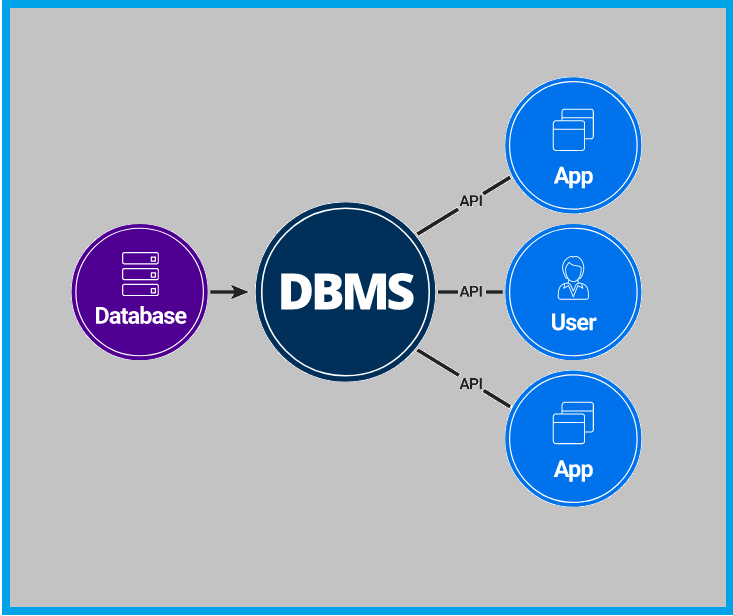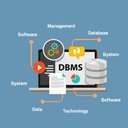In this tutorial, We will study What is Database Management System – DBMS the difference between data and information, the file system & advantages and disadvantages of DBMS. So let us start.
Post credit: What is Database Management System – DBMS
What is Database Management System – DBMS
Database management systems are a set of programs or we can say software tools used for the manipulation, updation, deletion, insertion, and retrieval of data from the database. The database management system (DBMS) contains information about a particular enterprise.
The database management system (DBMS) provides an environment that is both convenient and efficient to use. In the early days, database applications were built on file systems but as the requirements increased they prove to be less efficient.
Advantages of DBMS
-
- The database management system (DBMS) offers freedom from all the problems faced in the case of file systems.
- It is efficient for larger pieces of data and helps in improving the updating speed which in turn reduces redundancy and hence removes inconsistency helping the database to remain in a consistent state.
- It allows concurrent access which is much needed in today’s world. Plus it allows the addition of security constraints to a specific as well as to the whole database.
- The database management system (DBMS) considers each transaction as an atomic entity therefore each and every transaction can be performed independently of the other.
- In addition in case of failure during the execution of a transaction, the entire transaction executes or doesn’t execute at all, this helps in maintaining the consistency of the database.
- The decision-making ability is much more efficient making it much easier to generate good quality information.
Disadvantages of DBMS
-
- The cost increases due to the cost of hardware and software as highly trained people are required for maintenance and the cost of converting data is high. With the addition of so many features in database management systems (DBMS).
- The complexity also increases.
- Maintenance cost is high as frequent updates are required.
- Database management systems (DBMS) are not that efficient in case of usage in small-scale firms as the speed is slow.
The conclusion is that both the database management system (DBMS) and the file system can prove to be efficient and reliable depending on the user’s requirements.
What is data?
Data is the facts that can be recorded or stored in the form of text, numbers, videos, speech, images, etc. Example: Mobile numbers, address, voter id number, etc.
Data in the database management system (DBMS) is stored in the form of tables that are organized into columns that contain the type of data specified.
What is a database?
The database is a collection of interrelated data that can be used to perform some specified task.
So, databases are a collection of interrelated data that represent real-world entities and are used to perform real-world problems. The database is used in banking, airlines, universities, sales, online retailers, etc. Databases touch all aspects of our lives.
There are various types of databases
Centralized database
In this, there is only one centralized database that multiple users access.
Distributed database
In this multiple users will be accessing multiple databases concurrently.
Personal database
It is maintained by a single user and it is for personal use.
End-user database
In this, each user will have their own role and responsibilities and can access the database accordingly.
Commercial database
Users have to pay to access the database.
Relational database
In this Relational database, the data will be represented in terms of tables in this, each table will contain rows and columns.
Cloud database
This data will be stored in the cloud and from there, users will access the data.
Object-oriented database
Everything will be treated in terms of classes and objects.
Graph database
In this database, the node represents the entity and the edge represents the relationship.
What is information?
Information is a collection of data. These are the facts that are provided or learned about something.
What is the difference between data and information?
| Data | Information |
|---|---|
| Data is raw information, facts that are not organized, that which need to be processed. | Information is organized facts that contain some meaning. |
| Every fact available is data. | Anything that is meaningful to us today is called information. |
What is a file system?
File systems are used for the retrieval and storage of data. They are just like DBMS but a little less efficient. They are used in organizations in which less security and constraints are required. They are more often used in small-scale firms.
There are many drawbacks of file systems –
Data redundancy and inconsistency
Duplication of information in various files leads to inconsistent states.
Difficulty in accessing information
A new program has to be written to carry out new tasks. Accessing the files is not convenient as well as efficient.
Data isolation
Multiple files and formats so programming becomes difficult.
Integrity problems
The addition of new constraints is hard than changing the existing ones.
Data dependence
Even the slightest change in a file affects the whole program and change is needed in all of them.
Atomicity issues
In case of any failure, there is no mechanism to switch back to the previous state. The file system does not guarantee atomicity.
Inefficient concurrent access
In the case of file systems, concurrent access leads to incorrect data and hence leads to an inconsistent state.
Security issues
It is hard to provide user access to some of the data rather than all.
Advantages of File Systems
-
- Regardless of the disadvantages of file systems, there are many advantages of files systems as they are less complex and can be easily used by any individual without having much technical knowledge.
- Data retrieval is easy and efficient.
- Data can be stored in a compact form. In the file system, the backup system is automatic and fast.
- Data retrieval can be done from remote locations which means data can be accessed from any location around the globe.
Thanks for giving your valuable time to learn What is DBMS (Database Management System). If you are interested to learn DBMS full courses so stay connected with us.


